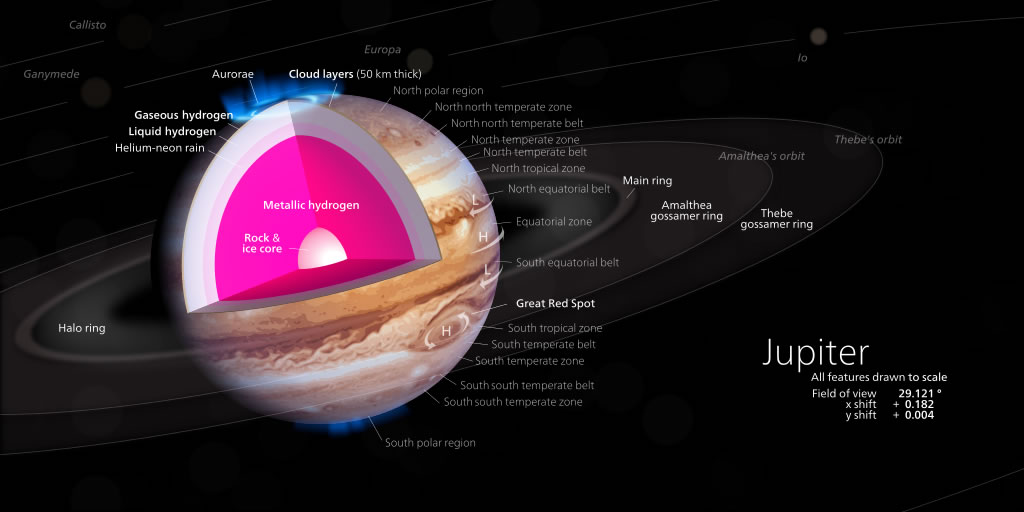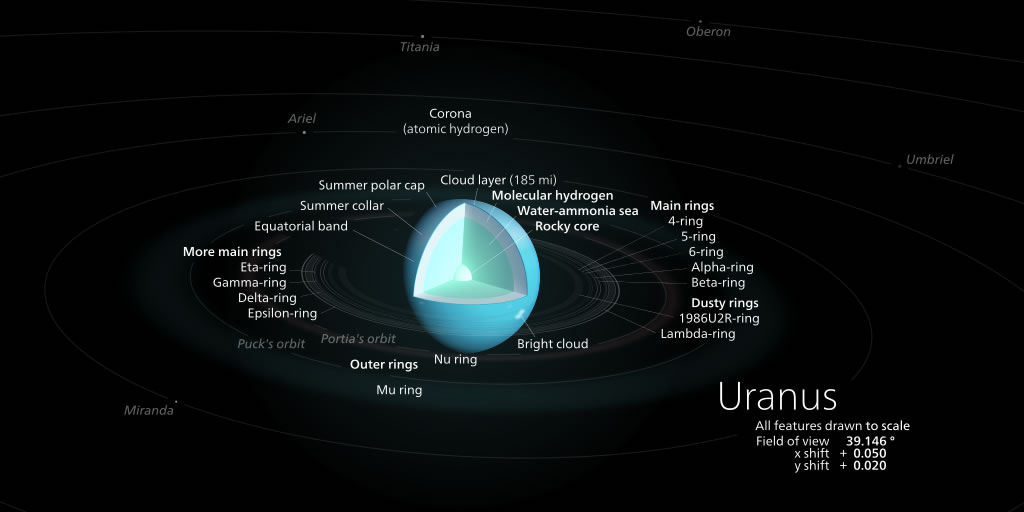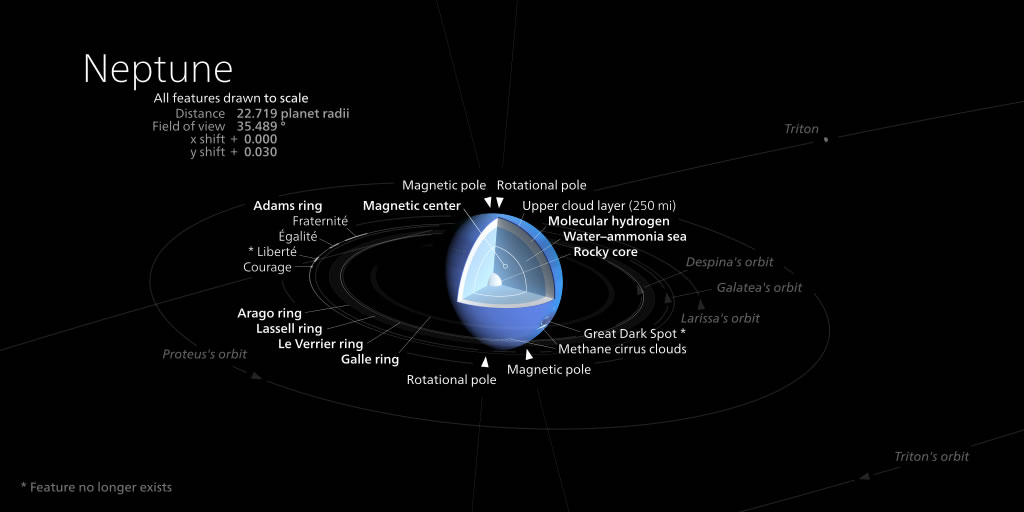Gas Giants
11.7 - Understand the main theories for the formation and current position of the gas giant planets in our Solar System12.3 - Understand the main theories for the formation of gas giant planets in planetary systems
Composition
In our solar system we see larger bodies than terrestrial ones with a thick hydrogen and helium atmosphere. They have a rocky core deep within and the largest have an outer core of liquid metallic hydrogen that creates a strong magnetic field. The smaller ones have an outer core of molecular hydrogen and water-ammonia.
There are differences between the two nearest and the two furthest giants. Visually Jupiter and Saturn have rich clouds at the top of their atmosphere and are substantially larger. Uranus and Neptune are smaller and have fewer visual features. These contain more elements and are sometimes known as ice giants.
Evolution
As the inner planets formed from rock, gas from the Sun’s formation travelled further and the gas giants evolved by accreting more and more gas.
Scientists have long theorised about their position in the solar system. If they tried to form nearer the Sun, elements such as methane, ammonia and carbon dioxide would be too cold for them to condense. The area that this can happen is much further out than where the inner planets orbit. It is called the ‘Frost Line’ or ‘Snow/Ice Line’.
It is thought the position of Uranus and Neptune meant they were unable to collect as much hydrogen and helium as Jupiter and Saturn.
Exoplanets
The majority of exoplanets discovered to date are gas giants, mostly because of their size and mass they are easier to find. Many orbit closer to their parent star and are known as ‘Hot Jupiters’. Frequently they will orbit smaller red dwarf stars. It is thought that either their frost line is substantially nearer the star, they have migrated inwards towards the star over time or the stars and the planets composition has allowed formation at such a distance.
Did you know?
The Nice model is an early solar system evolution scenario involving the gas giants movement into their present positions
See Also
Links
Planet Hunters The Role of Planetary Migration in the Evolution of the Solar System
Science Daily Gas giant






 | © All Rights Reserved |
| © All Rights Reserved |